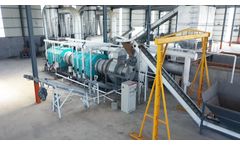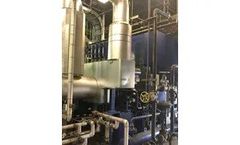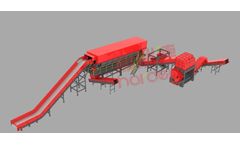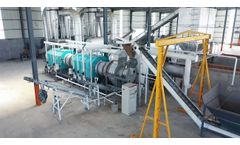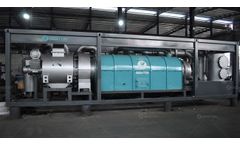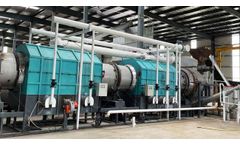Refine by
Gasification Articles & Analysis
149 articles found
Renewable Energy Integration Biochar’s role extends into renewable energy sectors as well. Gasification and co-firing facilities utilize biochar as a supplementary fuel, capitalizing on its calorific value while maintaining lower emission profiles. ...
Jinneng is an integrated chemical enterprise focusing on the production and sale of coal derivative chemicals and refined chemical products. One of the company's main products is coke, which is primarily used in steel mills. Coke oven gas (COG) is a byproduct of the coking process in which coal is heated in the absence of air to drive off the volatile compounds. COG is a high hydrogen and medium ...
For example, combining pyrolysis with gasification or biochemical processes can further enhance the overall sustainability of waste management systems. 3. ...
In biomass methanol, China leads due to breakthroughs in gasification and green hydrogen integration, targeting 8 million tons of green methanol capacity by 2028. ...
Application Scenarios: Directly applicable in cement kilns and power boilers for heat and electricity generation, or converted into methanol through "gasification + catalytic synthesis," offering both emission reduction and resource recycling benefits. 4. ...
Type of Biochar Production Process The method used to produce biochar—whether through pyrolysis, gasification, or another process—can also influence the cost of the equipment. ...
Defining Biomass Gasification Biomass gasification is a thermo-chemical process in which organic materials, such as wood chips, agricultural waste, or municipal solid waste, are converted into a gaseous product called syngas (synthetic gas). ...
Gordon Hoskinson invented the core pyrolytic gasification technology, which has been used by the plant for nearly 30 years; this plant is representative of Version 3 of the technology. ...
The HWTEF was developed for Harford County by the Northeast Maryland Waste Disposal Authority (the Authority) under its revenue bond financing authority. The Authority owned the facility on behalf of Harford County and operated by Energy Recovery Operations, Inc. (EROI). It was decommissioned last year after more than 20 years of successful operations due to the U.S. Army not renewing the land ...
Germany is a world leader in biomass gasification technology. It has promulgated the Renewable Energy Law (EEG) and provided clear subsidy policies for biomass gasification power generation. ? Biomass-to-methanol production uses biogas generated from agricultural and forestry wastes and kitchen waste to produce biogas through biomass ...
Innovations such as biomass gasification, pyrolysis technology, and advanced filtration systems can significantly improve the efficiency and environmental footprint of charcoal making. ...
Integrated Bioenergy Systems Combining biomass pyrolysis with other bioenergy technologies, such as anaerobic digestion and gasification, creates integrated bioenergy systems that maximize resource utilization and energy recovery. ...
The conversion methods of biomass into fuel include pyrolysis, torrefaction, gasification, liquefaction and combustion in thermochemical conversion technology, etc. ...
By integrating processes such as gasification, hydroprocessing, and fermentation, these systems maximize the utilization of biomass resources and minimize waste generation.Environmental and Economic Implications of Biomass Pyrolysis The adoption of biomass pyrolysis technology offers significant environmental and economic benefits. ...
Energy Production: Coconut shell charcoal is utilized as a renewable fuel source for energy production, including heat generation, electricity generation, and biomass gasification, contributing to sustainable energy solutions. Conclusion In conclusion, increasing the carbon content of coconut shell charcoal involves a combination of meticulous production techniques, precise ...
Additionally, integration with complementary technologies such as gasification and bio-refining holds promise for further enhancing the versatility and efficiency of biomass pyrolysis processes. ...
Precision temperature control ensures an optimized pyrolysis process, laying the groundwork for the subsequent gasification stage. Gasification for Conversion of Volatile Components Gasification follows pyrolysis, converting volatile components released during thermal decomposition into valuable gases. ...
Environmental Impact and Sustainable Practices Emission Control Systems Environmental stewardship is integral to mobile biochar machines. Advanced gasification technologies and meticulous emission control systems minimize the environmental footprint, aligning biochar production with eco-friendly principles. ...
Biochar Production Equipment Overview Pyrolysis Reactors and Technology Various pyrolysis reactors, such as rotary kilns, batch or continuous pyrolysis units, and gasification systems, are used in biochar production. Each technology offers unique advantages and applications. ...
It involves the heating of biomass in the absence of oxygen, resulting in the decomposition of organic materials and the production of charcoal. Gasification and Carbonization: Gasification and carbonization are integral steps in the charcoal production process, converting volatile components into useful gases and creating high-quality charcoal. ...





